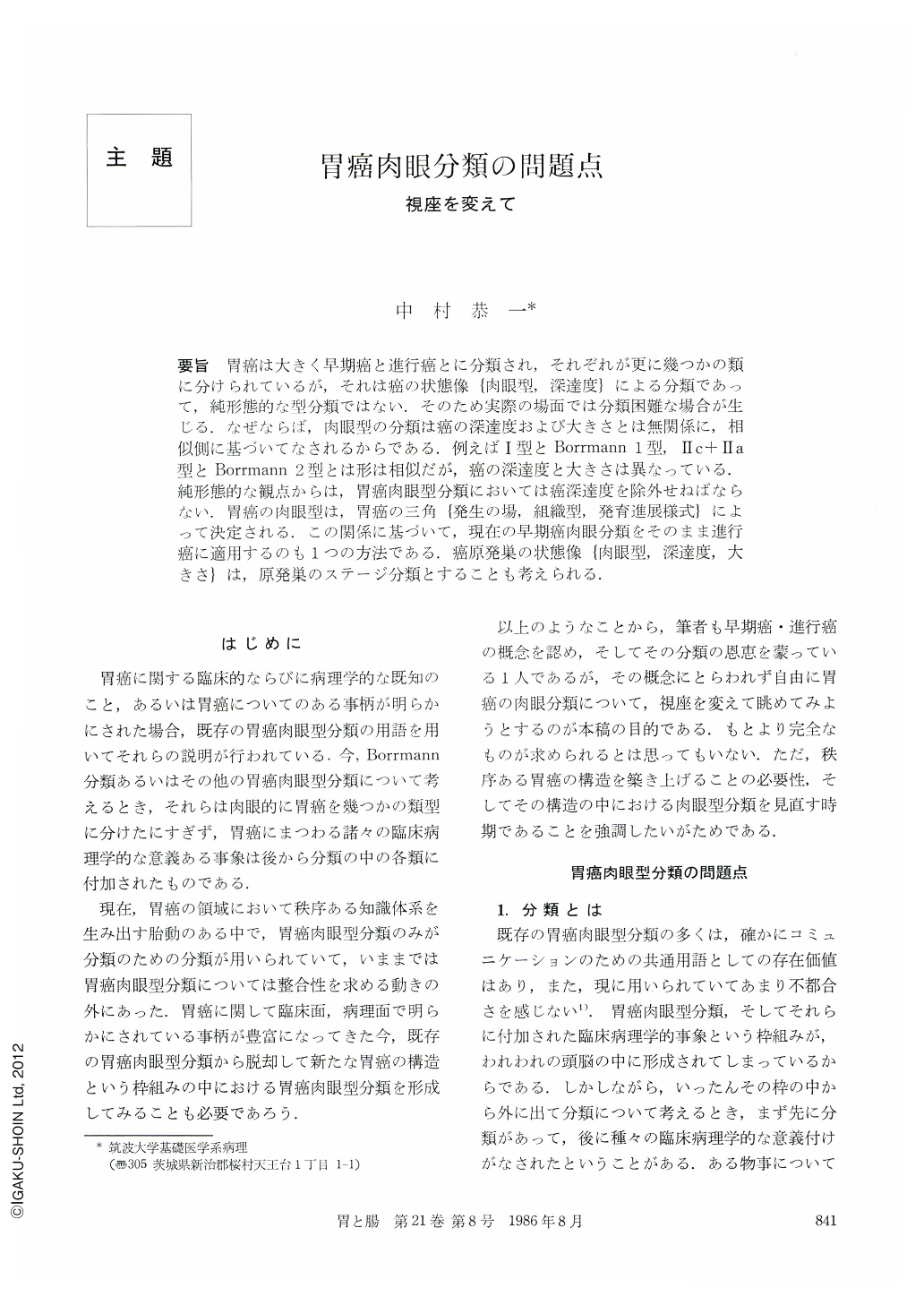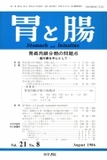Japanese
English
- 有料閲覧
- Abstract 文献概要
- 1ページ目 Look Inside
- サイト内被引用 Cited by
要旨 胃癌は大きく早期癌と進行癌とに分類され,それぞれが更に幾つかの類に分けられているが,それは癌の状態像{肉眼型,深達度}による分類であって,純形態的な型分類ではない.そのため実際の場面では分類困難な場合が生じる.なぜならば,肉眼型の分類は癌の深達度および大きさとは無関係に,相似側に基づいてなされるからである.例えばⅠ型とBorrmann1型,Ⅱc+Ⅱa型とBorrmann2型とは形は相似だが,癌の深達度と大きさは異なっている.純形態的な観点からは,胃癌肉眼型分類においては癌深達度を除外せねばならない.胃癌の肉眼型は,胃癌の三角{発生の揚,組織型,発育進展様式}によって決定される.この関係に基づいて,現在の早期癌肉眼分類をそのまま進行癌に適用するのも1つの方法である.癌原発巣の状態像{肉眼型,深達度,大きさ}は,原発巣のステージ分類とすることも考えられる.
According to the rule of macroscopic classification, gastric carcinomas are divided first by infiltrative depth in the gastric wall into two categories, early and advanced. Then, these are further divided into several types. This classification is based on the condition of gastric carcinoma like infiltrative depth, not on the macroscopic findings only.
Application of the classification to gastric carcinomas is done in accordance with the law of similarity, independently of the infiltrative depth and size of the carcinomas. For example, Type Ⅰ of the early carcinoma and Borrmann type 1 of the advanced carcinoma are morphologically similar. The same can be said for Type Ⅱc+Ⅱa and Borrmann type 2. Meanwhile, there are cases of the advanced carcinomas macroscopically showing types of the early ones, and vice versa. Based on the aforementioned, it is necessary to rule out the infiltrative depth from the macroscopic classification.
Macroscopic configuration of the gastric carcinomas are closely related to the field of cancer-development, histological type and mode of growth. These three factors are related to each other constituting the socalled “triangle for detecting macroscopic types of the gastric carcinomas”.
Gastric carcinomas are classified dichotomously for each factor, i.e., fundic gland mucosal area without intestinal metaplasia or the other for the field of cancer-development, undifferentiated (gastric type) or differentiated (intestinal type) for the histological type, and diffuse or circumscribed for the mode of growth.
From the view-point of the triangle, the macroscopic typing of the early gastric carcinoma currently done may be practically applied to advanced carcinomas. Further, staging of the primary lesion of the gastric carcinoma has to be described by the three factors, macroscopic type, infiltrative depth and size of the carcinoma so as to determine staging of cancer extension in patients with carcinoma.

Copyright © 1986, Igaku-Shoin Ltd. All rights reserved.


